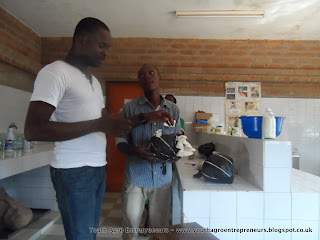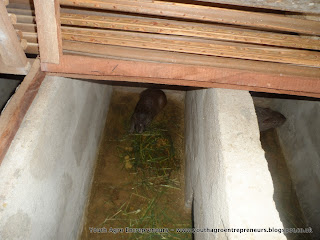
Local agricultural processing is vital as Africa’s food imports continue to rise – but not all commodities are well suited to domestic value addition
A rising middle class and expanding population are pushing Africa’s food import bill to worrying highs. While rising capital imports suggest growing productive capacity, booming consumption imports – especially for products that can be produced domestically – are a red flag, according to Jean-Louis Ekra, president of the African Export-Import Bank in Cairo. They suggest economies are failing to keep pace and running up unnecessary trade imbalances.
Africa lost its status as a net exporter of agricultural products in the early 1980s when prices for raw commodities fell and local production stagnated. Since then, agricultural imports have grown faster than agricultural exports and by 2007 reached a record high of $47bn, yielding a deficit of $22bn. The value of agricultural exports from Thailand is now greater than for the whole of the African continent below the Sahara.
Nature is partly to blame. Weather-related damage has hit rice crops in Benin, Burkina Faso, Cameroon, Niger and Madagascar. Foot and mouth disease has hurt Egypt’s bovine exports, and cassava – one of Africa’s major offerings to world agricultural trade – is being felled by a fast-spreading virus. Policy volatility is also at fault. Nigeria – Africa’s largest rice importer – announced heightened import taxes last year, which prompted a sudden rise in purchases. And across Africa, weak infrastructure hinders markets.
But rising food imports are also a consequence of wealth and one of its tell-tale effects: a taste for protein. Poultry import growth last year was around 12 percent, driven by higher incomes in the likes Angola, Benin, Ghana, and the Democratic Republic of the Congo. “Africa is growing at a base of 5 to 6 percent a year, which translates into a growing middle class with an increase of consumption,” says Mr Ekra. “In west Africa, for instance, you see an increasing taste for luxury Thai rice.”
This is not only the case in the more affluent economies. In Sierra Leone, which languishes towards the bottom of the United Nations’ Human Development Index, rice imports have run to about 15 percent of consumption in the last few years, and have reached as much as 45 percent in the recent past. “That means an import bill of several hundred million dollars, a truly frightening percentage of the $3.8bn GDP,” says Paddy Docherty, chief executive of Phoenix Africa, a company investing in post-conflict countries.
Companies testify to the challenges of agricultural import-dependence in their continental operations. “We have 13 factories in Africa that use products like soft oils, tomatoes or starch-based compounds on a daily basis, but much of this is imported, wasting foreign exchange and increasing our carbon footprint,” says Marc Engel, chief procurement officer at Unilever.
But to an optimist, import-dependence spells opportunity. Firstly, structural imbalances are a symptom of fast growth. China’s annual agricultural consumption needs have now overtaken production too. For companies and investors, the import profile signals strong domestic demand which could be tapped through investment in domestic agribusiness and food retail.
Attention is turning to greater domestic processing of agricultural resources, to ensure raw products can reach finished form within African markets. Raising productivity is key to this. “In order to have a sustainable, solid rural sector you cannot have poverty. You must have prosperity,” says Howard-Yana Shapiro, global director of plant science and external research for Mars. “And how will that come without productivity? So productivity is the key piece.”
Mr Docherty agrees that productivity increases are needed to drive local value addition. “The vast majority of imports are of bagged rice, i.e. already milled and packaged,” says Mr Docherty. “There is great potential to do this milling in situ in places like Sierra Leone, if there is the primary production in country to feed the mills. I know from experience that the tiny areas in production in Sierra Leone, and the low yields currently being achieved because of the lack of inputs such as fertiliser and lime, means that there is milling capacity which is unused.”
One Beijing-funded demonstration farm in the Bo region has a decent rice mill which is shut because it lacks the raw product to justify keeping it in operation, says Mr Docherty: “Processing capacity alone is no good without sufficient volumes of local production. I do not imagine the economics would work if raw rice was imported for local processing. Processing capacity must grow alongside local production, and the two together are essential for achieving food security and more efficient markets in Africa.”
It is also important to ensure local processing is technically advanced, otherwise it can consume large amounts of labour without a value payback. Cassava processing, for instance, is often low productivity – and traditional processing methods can lead to contamination of cassava crops.
Practitioners must distinguish between commodities which make sense to process locally, and those that do not. Technoserve, the NGO, has conducted analysis across several African markets and their findings challenge the view that local processing is always best. Measuring the domestic resource cost of a range of Mozambican commodities threw up a number of interesting insights. Local processing of cashew nuts was seen to be highly advantageous, while local varieties of rice (Chokwe and Zambezia varieties) were not found to be financially profitable without credit access and technical assistance. Potatoes command low prices but production costs are modest, suggesting a good market, while paprika was found to be “somewhat profitable” for farmers, although pesticide and fertiliser interventions would be needed.
Simon Winter, senior vice president for development at Technoserve, says market dynamics signal where and how to go about value addition. “Once you have identified the market and where processing needs to be, then you optimise your logistics,” he says. It does not make sense, for instance, to develop cashew roasting and packaging facilities too close to the production source if the consumer market is far away, due to the damage that will be caused during transportation. “If cashew kernels are in vacuum packed 2kg bags, they are less likely to get broken and crushed than in a small foil packet,” Mr Winter notes. Chocolate, on the other hand, would make more sense to process locally (currently, Europe and North America dominate this segment). While high temperatures are a struggle in west Africa, there is less risk of product damage during transportation of chocolate. “You have to understand this commodity by commodity,” says Mr Winter.
There are many constraints to value addition, even where economic arguments are strong. First is a lack of resources, including refrigeration and cold storage, vehicles and skilled personnel. Then there are deficient or confusing standards, especially between countries. And there are serious health dangers to some locally-grown produce, such as aflatoxin that can be found in large quantities in maize and nuts.
Local processing means being able to identify and have the means to flush out such health dangers, for instance through aseptic processing. Important assistance here can come from government agencies. The Kenya Agriculture Research Institute, for instance, provides disease and pest management support, as does Cocobod, the cocoa sector agency in Ghana.
When exploring the market dynamics of local processing, it is also important for companies and practitioners to distinguish between producer- versus buyer-driven chains. Buyer-driven chains can be evident in agriculture, when freshness standards and protected varieties are important, when there is high product differentiation, when packaging and logistics are complicated, or when R&D and other knowledge elements in production or processing are critical. So it may well be large retailers and brand companies – from Massmart to Unilever – who could provide the impetus to local processing in Africa, saving themselves money and reducing supply chain complexity.
ADAM ROBERT GREEN
Contributor to "THIS IS AFRICA" Development Section
Read original article from the link below
http://www.thisisafricaonline.com/Development2/The-value-addition-imperative-in-agriculture?ct=true
























































































































































